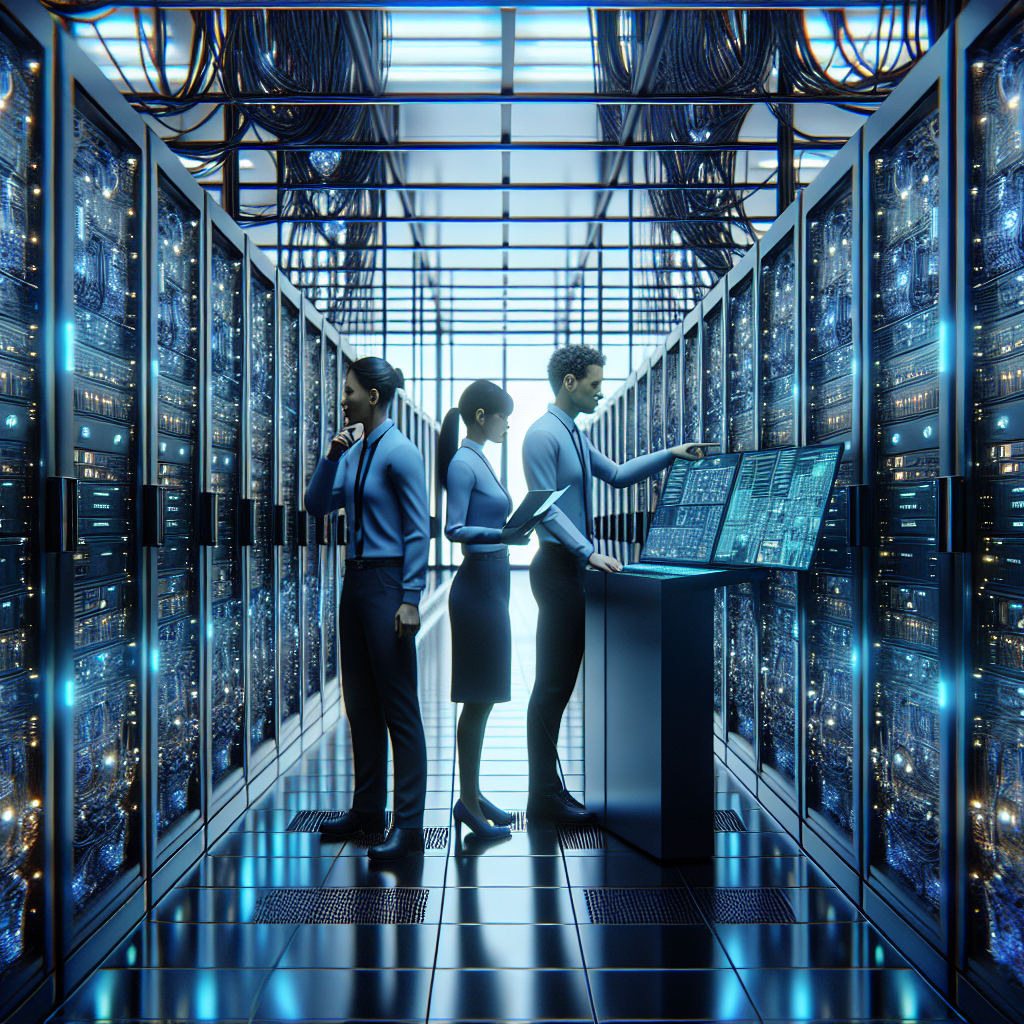What No One Tells You About Data Centers and the Risks of AI Innovation
The Impact of Data Centers and AI on the Future of Technology
Introduction
In the ever-evolving world of technology, data centers have emerged as the backbone supporting the growth and sophistication of AI technologies. These sprawling structures house and manage vast amounts of information, making them a vital component of modern computing infrastructure. As AI, particularly generative AI, continues to revolutionize industries, understanding its relationship with data centers becomes crucial. This connection is at the forefront of today’s tech landscape, influencing trends, safety protocols, and sustainability efforts across the globe.
Background
Data centers are specialized facilities designed to house computer systems and associated components, such as telecommunications and storage systems. They are critical for organizations that rely on large-scale data processing and storage. As AI technology becomes more prevalent, especially with the rise of generative AI, these centers are undergoing significant transformations. Generative AI, with its ability to create increasingly complex models and algorithms, demands immense computing power. Consequently, data centers must evolve to accommodate these needs.
However, this evolution brings about challenges, the most pressing of which relates to power consumption. The sheer energy required to run AI operations raises concerns about the environmental footprint of data centers. The sustainability of these operations becomes questionable, given the massive amounts of electricity consumed and the subsequent carbon emissions. The challenge is striking a balance between technological advancement and ecological responsibility.
Trends
The burgeoning demand for AI applications has led to a proportional increase in energy consumption within data centers. Reports suggest that the energy consumption of data centers is growing at an unsustainable rate, driven largely by ever-more demanding AI workloads. An incident underlining this trend was the recent fire at the X Data Center in Hillsboro, Oregon. The fire, reportedly sparked by an electrical or mechanical failure in a power system, highlighted the risks posed by escalating electricity demands.
This incident serves as a stark reminder of the importance of safety in tech. Not only does the increasing power draw heighten the risk of such incidents, but it also underscores the need for robust safety measures. As technology continues to develop, ensuring the safety of data centers becomes paramount. The story of the X Data Center should act as a catalyst for renewed focus on fire safety and prevention within these environments (source: Wired).
Insights
The relationship between generative AI and power requirements is intricate. As AI models grow more sophisticated, they require more computational resources, which in turn drives power consumption. To illustrate this, consider the analogy of a sprawling metropolis: as the city expands, it needs more resources and infrastructure to sustain itself, much like data centers expanding to support more advanced AI operations.
As incidents like the X Data Center fire reveal, the rapid expansion poses safety risks that need addressing. Enhanced fire prevention measures are critical to mitigating such risks. Industry leaders, such as Schneider Electric and Digital Realty, are already advocating for advanced safety protocols and more efficient cooling systems to curb excessive energy use and prevent electrical malfunctions (source: \”Data center fires are rare, with about two dozen well-known incidents over the past decade.\”).
Apart from safety, there’s a dire need for the technological evolution of data centers. Implementing technologies that enhance efficiency and promote sustainability, like AI-driven cooling systems and renewable energy sources, is crucial for future-proofing these facilities.
Forecast
Looking ahead, the future of data centers is both challenging and exciting. As the demand for AI continues to soar, data centers must adapt by innovating and embracing sustainable AI technologies. The integration of renewable energy sources, such as wind and solar power, alongside more efficient cooling systems, represents the next evolution in reducing the carbon footprint of data centers.
Moreover, advancements in AI could lead to smarter, self-regulating data centers that optimize their energy usage in real-time, reducing waste and enhancing operational safety. Industry forecasts suggest that the tech sector will need to prioritize these advancements to meet growing safety and efficiency standards.
Call to Action
For stakeholders in the tech industry, now is the time to take decisive action. Prioritizing safety measures and sustainability initiatives is not just beneficial—it’s imperative. Embrace innovative solutions to enhance both safety and efficiency. Stay informed on developments within the realms of data centers and generative AI, focusing on new, cutting-edge technologies designed to propel us forward.
For more information about the X Data Center fire and its implications, refer to the detailed account on Wired.
By aligning with these evolving standards, we can ensure a future where technology not only thrives but does so responsibly and safely.







